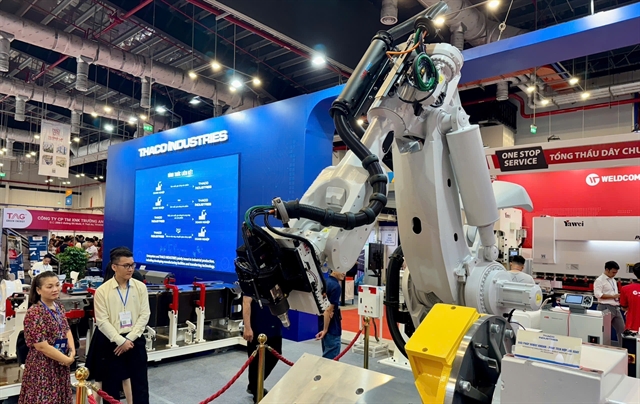 Economy
Economy

 |
| Phùng Hà, general secretary and vice chairman of the Việt Nam Fertiliser Association. |
{ "id": "ZWf_QD8YZk", "type": "myToolImages", "data": { "data": "" } }
Along with the rational use of fertiliser, Việt Nam needs to research and develop new generation product lines that meet the demand for organic agricultural production and help increase the productivity and quality of agricultural products. This would help protect the environment and reduce emissions, and many developed countries, such as the US, Japan and South Korea, are already doing so.
Phùng Hà, general secretary and vice chairman of the Việt Nam Fertiliser Association, spoke to Việt Nam News Agency about this issue.
Việt Nam’s demand for fertiliser for agricultural production now stands at nearly 11 million tonnes a year, nearly seven times higher than 20 years ago. The efficiency in using fertiliser reaches about 50 per cent. What is your opinion on this issue?
In recent years, Việt Nam's agriculture needs about 11 million tonnes of fertiliser per year. The higher fertiliser demand is due to the increasing demand for agricultural products. However, quite a large amount of applied fertiliser is lost to the environment.
According to the Food and Agriculture Organisation (FAO) of the United Nations, Việt Nam is among the top countries using fertiliser in the world.
The average amount of fertiliser used in agriculture is about 145 kilos per ha in the world, while this figure is over 400 kilos per ha in Việt Nam.
So, the amount of fertiliser lost to the environment is also high, such as 40-60 per cent for nitrogen fertiliser and 30-40 per cent for phosphate fertiliser.
This means Việt Nam uses too much fertiliser per hectare. That will make the plants not absorb it, affecting production efficiency.
According to FAO calculations, fertiliser accounts for 40-70 per cent of the production cost of agricultural products, depending on the crop type and season.
In addition, the quality of agricultural products is also affected compared to using a reasonable ratio of chemical fertiliser in combination with organic fertiliser.
Another thing is the negative impact on the environment and climate.
Agricultural production generates about 14 per cent of total global man-made greenhouse gas emissions, including 15 per cent from fertiliser production and use.
Therefore, an amount of fertiliser will be lost to the soil, causing soil degradation or melting and then seeping into ponds, lakes, rivers and streams when fertiliser is overused.
According to experts, the current trend is green agriculture, but to ensure food security, Việt Nam still needs to use a reasonable ratio between chemical fertiliser and organic fertiliser. What do you comment about this issue?
This is a completely correct view. Việt Nam's agriculture has to perform two tasks of ensuring food security and switching to organic and sustainable agriculture.
Therefore, the Prime Minister has issued Decision 300/QĐ-TTg to approve a national action plan for building a transparent, responsible and sustainable food system by 2030.
The plan has goals of bringing land area for organic agricultural production to at least 2.5 per cent of the total agricultural production area and the amount of organic fertiliser to more than 30 per cent of the supply on the market, doubling that of 2020.
The agriculture sector needs to have many measures to achieve the goal of increasing organic agricultural land area. This area accounts for only 1.4 per cent of the total farming land area.
Many fertiliser enterprises in Việt Nam are implementing the strategy of developing new-generation fertiliser products, including multi-functional and organic fertilisers, for the development of green agriculture. What are solutions to support the businesses?
Currently, many fertiliser manufacturers in Việt Nam are developing many kinds of fertiliser, especially organic fertiliser, to reduce gas emissions.
This contributes to the development of green agriculture, so the Government needs appropriate support policies for them because the enterprises will not gain high profit from investment in the production of organic fertiliser or new-generation fertiliser products.
The first solution is to amend Law 71/2014/QH13, dated November 26, 2014, on amending and supplementing several articles of the tax laws, taking fertiliser from non-value-added taxable items to value-added taxable items. Thereby, fertiliser production projects are deducted value-added tax for input material and equipment.
Besides that, the State should develop science and technology funds or have preferential credit policies for enterprises to research and develop new generation fertiliser products for green agriculture.
In addition, European countries have recommended using fertiliser according to the "4R" principle of using the right rate, right source, right timing and right place to reach efficiency in fertilising crops. VNS




